![]()
Photos by MJ Klein and Hui-chen

Day 3 was our day to travel up to Laos from Thailand. We decided to take the Thai-Lao International bus, but unlike the last time, this time there was a new bus service from Khonkaen. This bus left in the afternoon, so Day 3 was rather uneventful and was spent mostly waiting for this bus to leave and then riding it up to Laos.
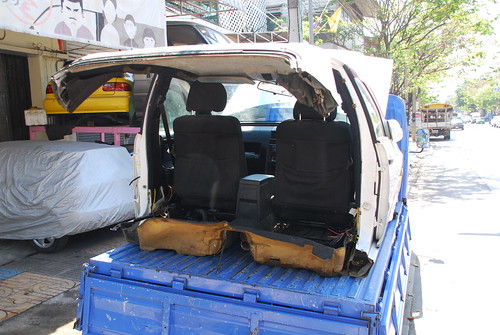
While walking around Khonkaen, we noticed this car, cut in half. Body shops here will cut off the wrecked part of vehicles and then put them back together with pieces from other vehicles.
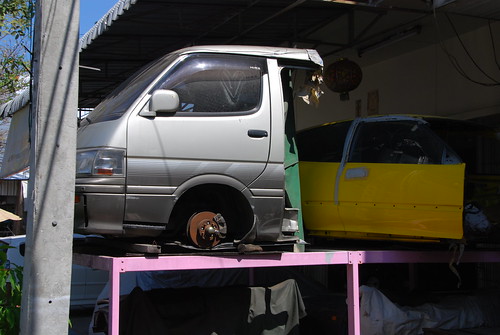
This is a cab from a van.
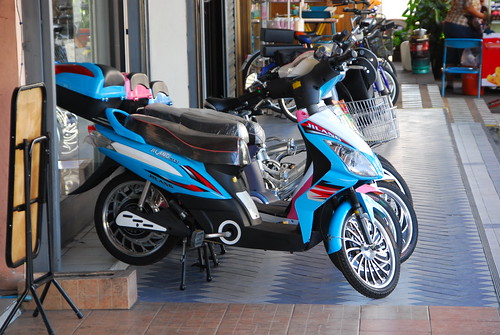
We also noticed this motor scooter with bicycle pedals. I haven’t seen a motorcycle with pedals in decades. I wasn’t aware that they were still produced!
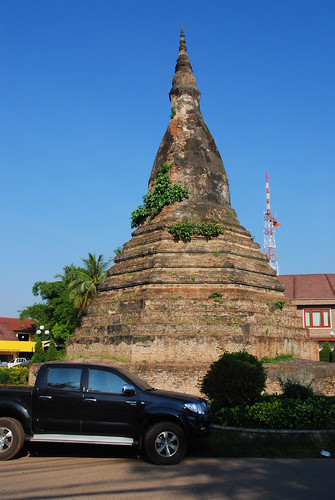
Eventually we arrived in Vientaine (photo taken the following day) and met our host, Prince Roy, at this place known as The “Tat Dam,” a very old stupa in Vientiane. The Tat Dam is a well-known landmark in Vientiane. But as the story goes, no one knows how old it is, or why it was originally built, as the Lao people have no written history. What we know of the Tat Dam comes from ancient written accounts by the visiting Chinese.
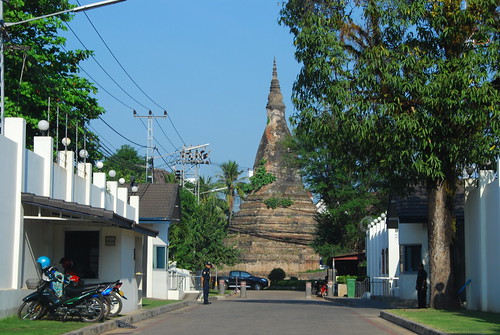
This shot shows the entrance to the US embassy where Price Roy is assigned.
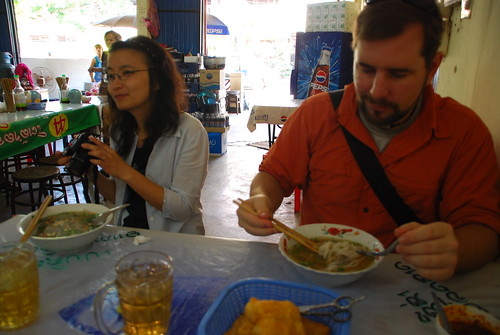
The first order of business on the next day was a Lao breakfast. Here you can see the soup and the oil bread that is dipped in the soup. Spicy Girl (on the left) is telling us about Vientiane and her knowledge of the area is impressive!
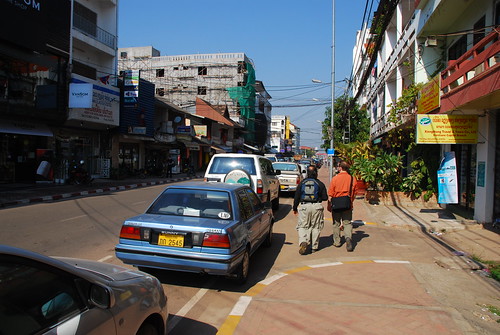
We took a walk down the main street in Vientiane where most of the foreigners hang out.
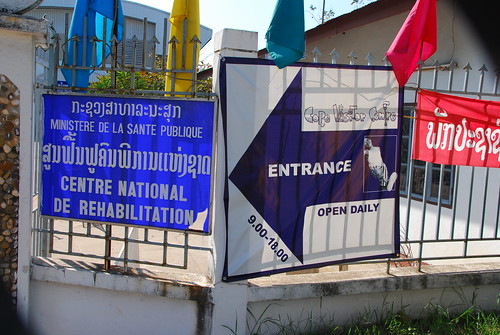
We rented motor cycles for the day. While Michael Turton and Michael Cannon left for parts unknown, Hui-chen and I visited the COPE Center.
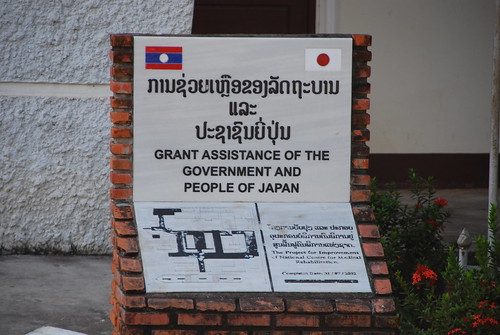
We saw signs of Japanese assistance in quite a few places around Vientiane. The COPE Center is one of them.
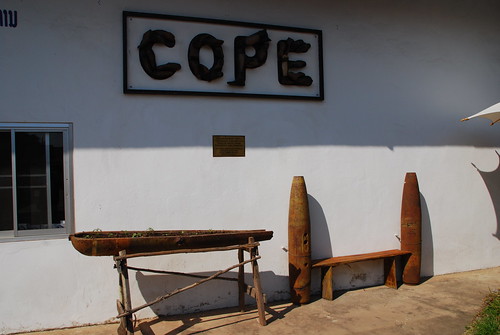
COPE provides a very necessary service for people who have been injured by one of the many unexploded bombs in Laos (UXO). Many people lose limbs in these encounters with UXOs and COPE provides them with prosthetic limbs and training for free.
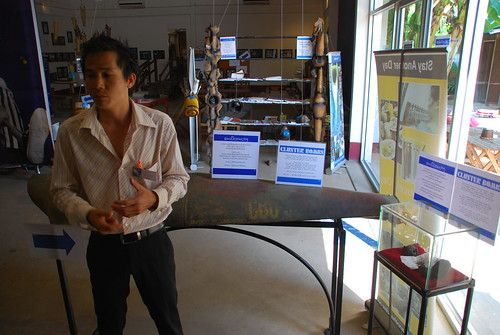
This is Mr. Nam who gave us a very good presentation about the role of COPE and the situation in Laos.
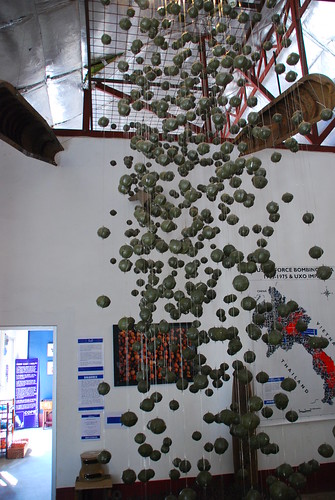
This is a depiction of a cluster bomb delivery system. The bomb shell opens and scatters many small round “bombies” (as the Lao people call them). These small round bombs scatter BBs when they explode. They are very dangerous, and the round shape attracts children who pick them up, mistaking them for a ball.
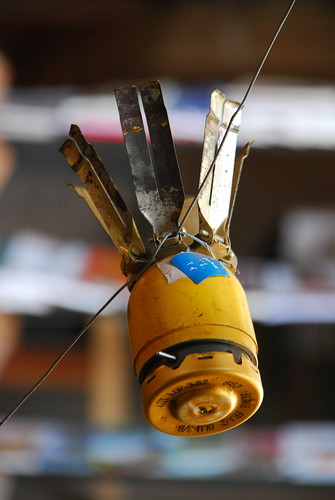
This is another kind of cluster bomb.
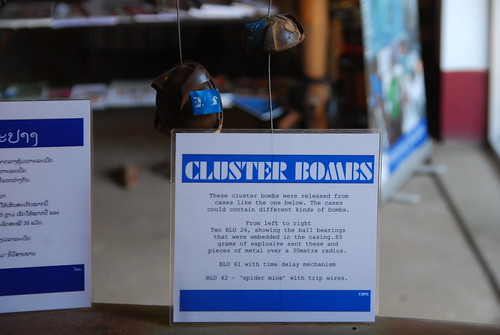
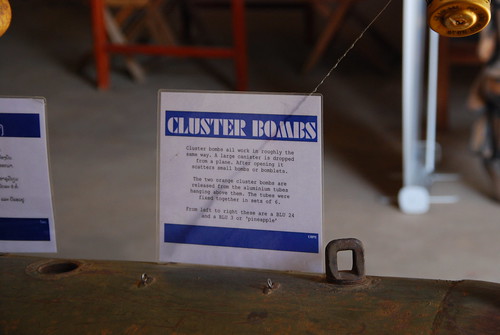
Information on cluster bombs. Click on any photo to go to the Flickr site and view the large size.
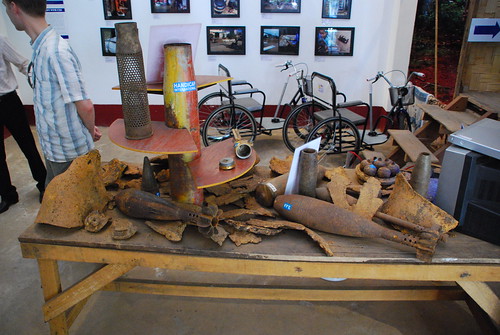
Some examples of bomb fragments found in Laos. The metal is valuable when sold as scrap, so many Lao people risk life and limb to collect either pieces or whole bombs. 
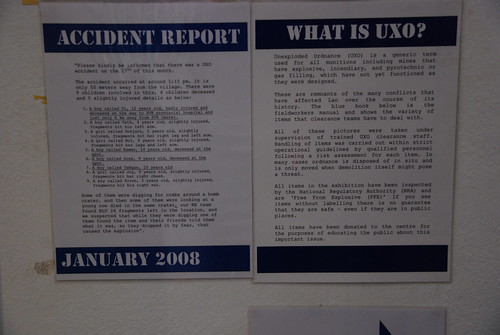
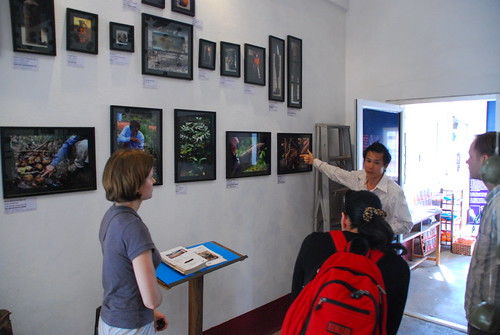
Mr. Nam explains many of the stories that are found on the wall in photographs and documents. Each story is tragic. Some child or adult finds a bomb, and the bomb ends up exploding and either killing or severely maiming people.
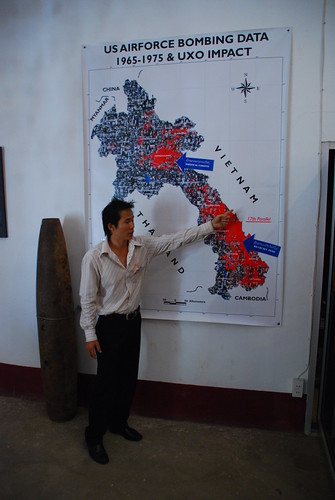
This chart tells an amazing story. More bombs were dropped on Laos than the entire amount dropped on Europe and Japan in WWII. The entire time, US politicians were lying to the American people and the world, saying that no activity was going on in Laos. For 9 years straight, there was a bombing sortie every 8 minutes, 24 hours a day, 7 days a week. Nearly all of the bombs dropped are of US origin, but somehow, the Lao people don’t harbor any resentment against the US. One interview with a Lao young man was very touching, as he said that he knew the bombs came from the US but that he wished the US would take them all back. Laos is the most bombed place on our planet, and up to 30% of those bombs did not explode on impact. This has left a devastating legacy behind.
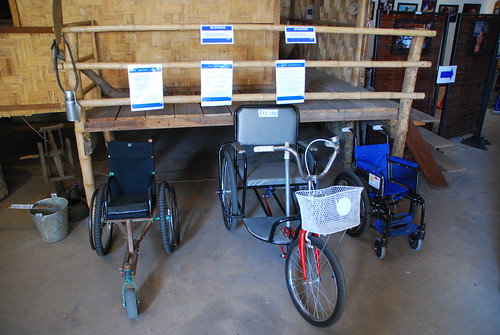
Wheelchair devices provided by COPE to needy persons.
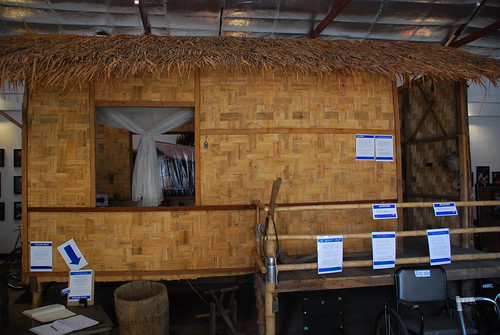
There is a model of a typical Lao village home on display.
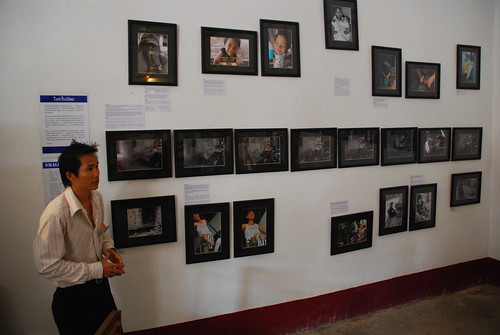
Some of the stories are unbelievable. The one that I remember is about a man who was out fishing with his children. He found a bomb near the shore of the lake and he reasoned that if he could explode the bomb in the water, he could get more fish. As he tried to move the bomb, it exploded, taking both his hands in the process. His children had to drag him back to the village. COPE has assisted him with new artificial limbs and training on how to use them for daily tasks.
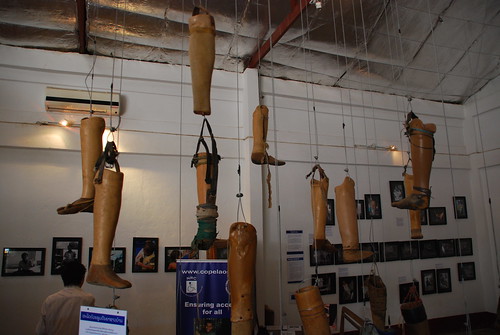

Mr. Nam explains that some of the people make their own artificial limbs in the village, and he showed us many examples of them, shown here. 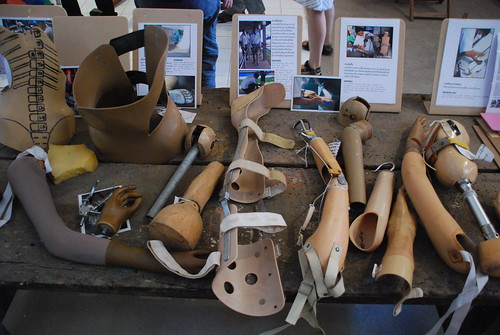
This is a shot of the type of products that COPE provides patients with.
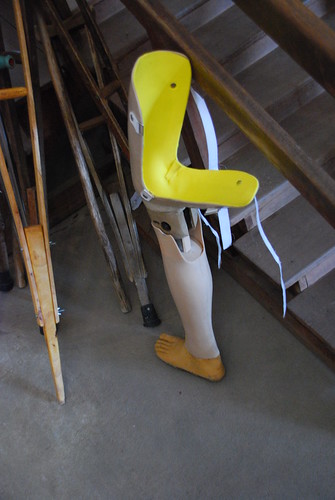
This rig allows someone to put their leg into it to see what it’s like to walk with an artificial limb. The stairs are part of the training course.
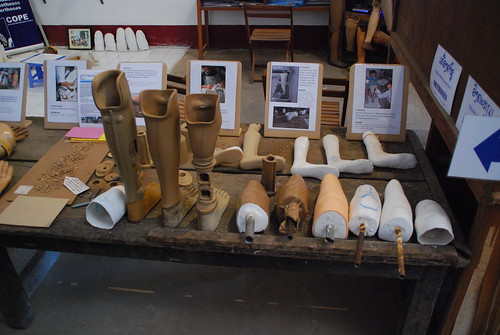
More COPE products. Hui-chen and I recommend a visit to the COPE Center if you are in Vientiane. It’s well worth it and the admission is totally free. Please leave them a donation!
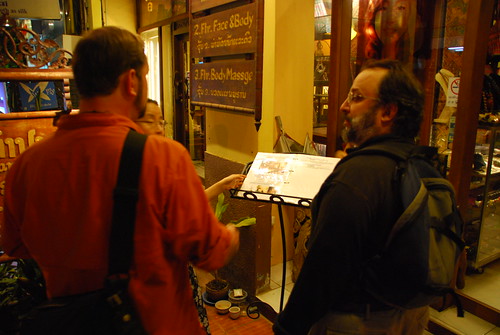
Later in the evening, when the 2 other Michaels had returned from their adventure (I’ll let them tell you what happened, in their own blogs), they went in search of a traditional Lao massage.
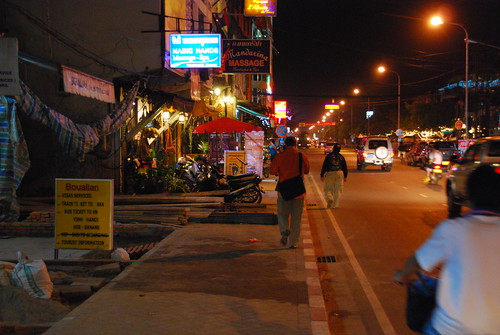
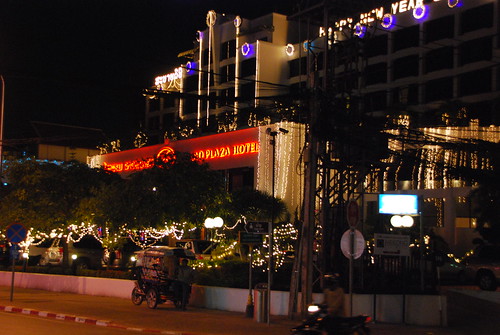
Not having ridden a motorcycle for 100+ kilometers, I wasn’t in need of a massage, so I went walking about and checked out the streets.
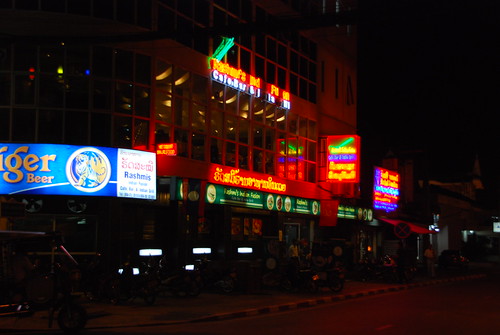
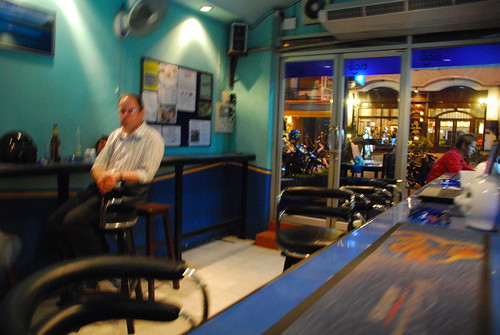
I eventually ended up in this bar. This photo was taken (by accident) by the owner, as I was showing him the camera and the optically stabilized lens.

Former field engineer MJ Klein now lives in Taiwan, and writes articles that primarily feature photographs of travels of MJ and wife Hui-chen, plus daily goings on in the bustling island nation of Taiwan, and other places in Asia. Articles feature people, culture, food, situations and sometimes the trials and tribulations of traveling in places such as China, Hong Kong, Thailand, Laos and of course Taiwan.








